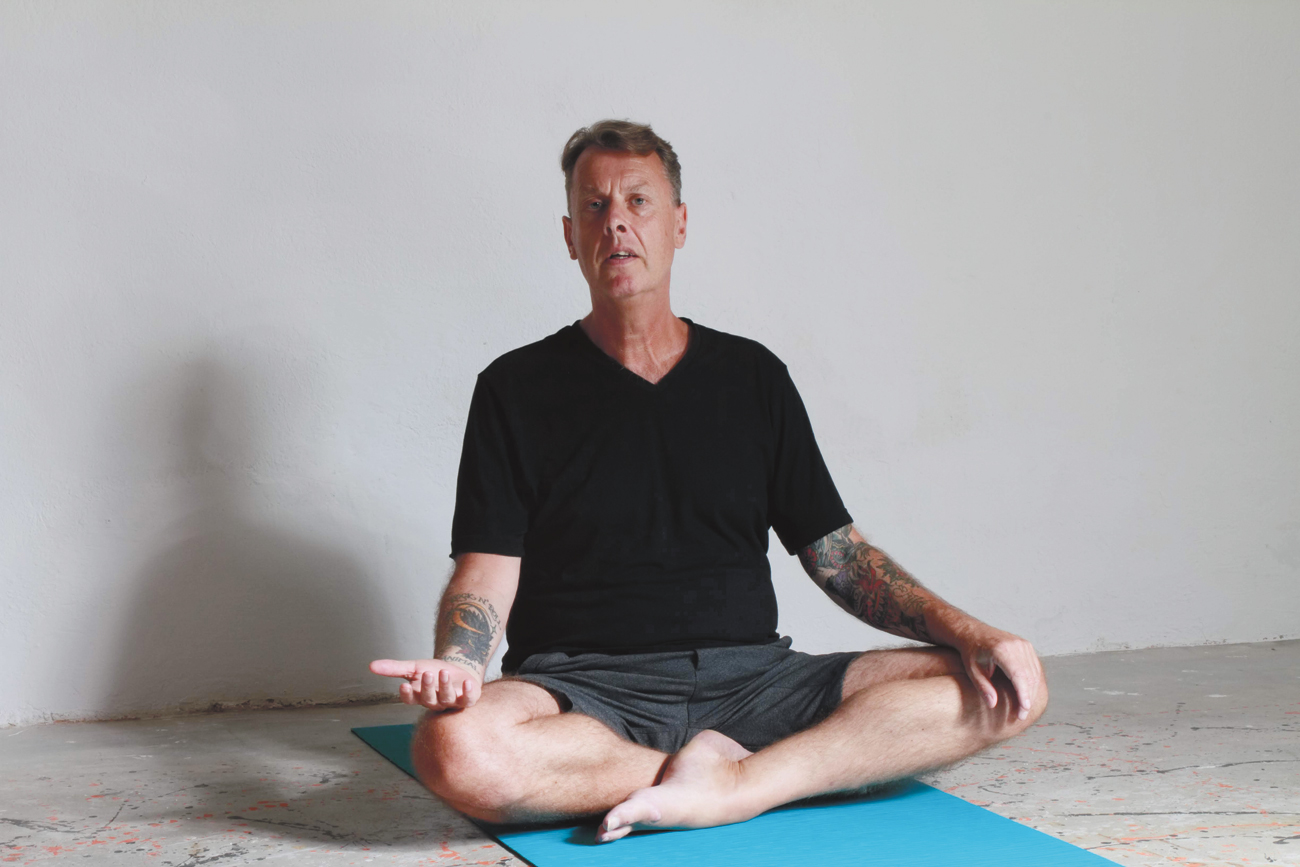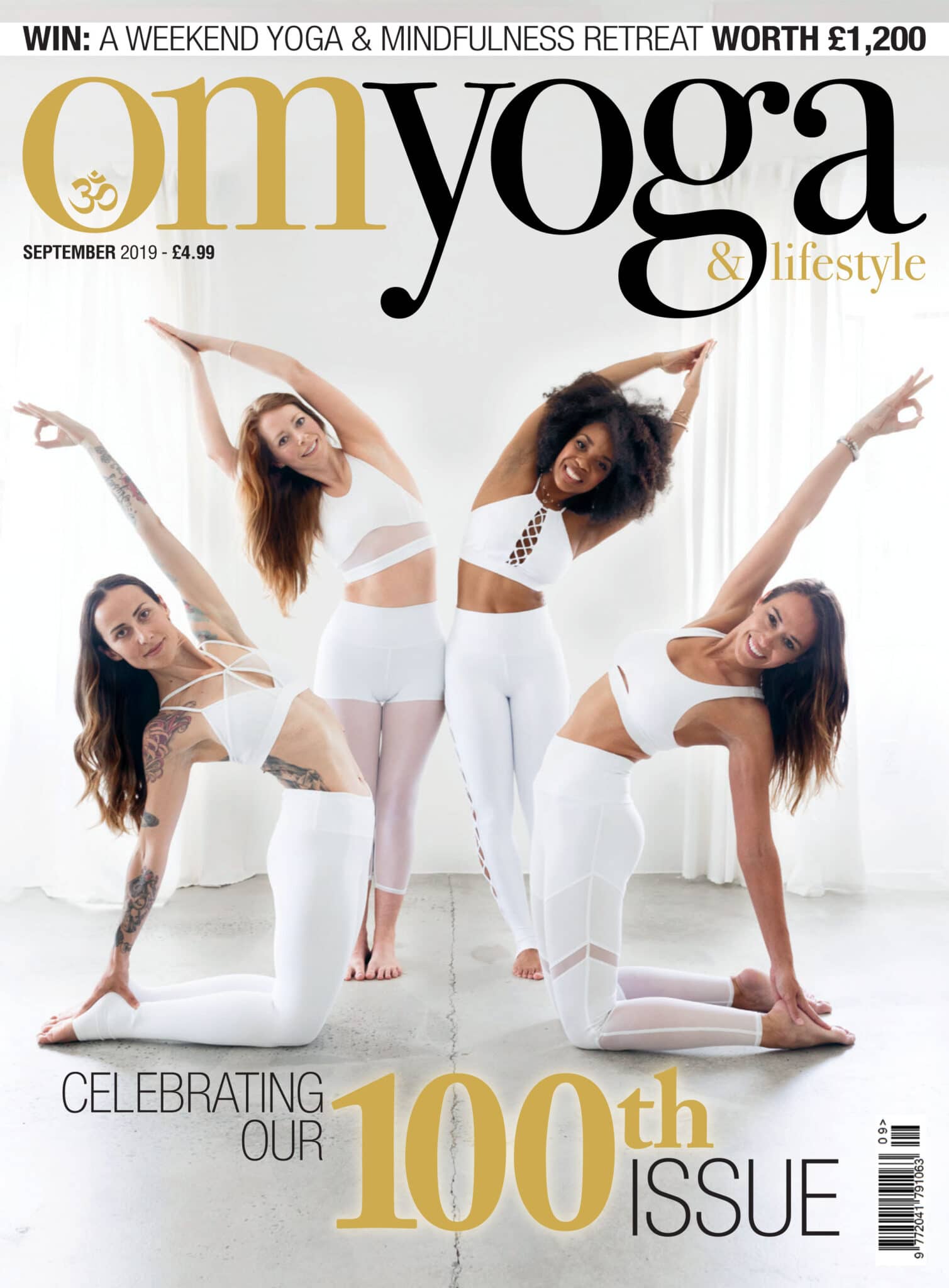
A writer’s tale
Professional writer and OM columnist, David Holzer, turned to Kundalini yoga a decade ago. As well as sparking an interest in all things yoga, it was a move that may have saved his life. Here, he tells his own story
When I walked into my first Kundalini yoga class in the spring of 2009, I didn’t know who I was. Six months earlier, I’d left a 10-day retreat on the island of Mallorca, where I lived, sure that I would never drink alcohol again. Booze had been a defining part of my life since I was 13 years old. I was now 46.
That first class hooked me. My teacher, dressed in white, covered her hair with a white turban and sat on a white lambskin. A former dancer, she moved through the kriyas with an elegance that masked how hard they were to do. I liked the way each kriya aimed to produce a specific mental and physical result – this one was intended to boost your immune system, that one was for creativity, and so on – and soon lost myself in the mantras, even growling along to ‘Long Time Sun’, the hippy folk song that closed each class.
I fell in love with Kundalini yoga because the breathing practices got me high. (I realised this after class one morning when I tried to speak to some friends outside a café and found I couldn’t string a sentence together.) But the best thing was the effect Kundalini had on me as a writer.
As a class progressed and I went deeper into myself, focusing fully on each kriya, words would bubble up from somewhere and by the time I lay down, in savasana, they would be flowing steadily. But when I reached the place I longed for, where I would and would not be inside my body, watching shifting, pulsing blobs of vivid oranges and purples in different shades drift into the centre of my vision and dissolve – as if I was watching a lava lamp with my eyes closed – the words suddenly stopped. Sometimes I was so deeply relaxed that I would begin to leave my body. When I reeled myself back in, the words would start to come again.
From the Yoga Commando…to the studio of seduction
After a while I no longer needed the intensity of the Kundalini ‘high’ and became curious about other forms of yoga.
The man I called the ‘Yoga Commando’ taught me my first real yoga lesson. He was in his late 50s, powerful and graceful, a kind, compassionate teacher beneath his gruff London manner. His practice had a purity to it that I wanted to acquire. One morning I was the only person who turned up for his class and we began doing Sun Salutations. After 15 minutes I knew he could go on forever, but I couldn’t. I was pouring with sweat, breathing wildly. He stopped and looked at me.
‘Why are you doing this?’ he said.
‘Because you are,’ I gasped.
He raised an eyebrow.
At that moment I understood that yoga wasn’t about blindly following the teacher, or anyone else. It was about practicing for myself, doing what felt right for me.
Soon, classes with the Yoga Commando weren’t enough. The way he lived and practiced was too pure. But, thanks to him, I had glimpsed a secret world.
Back then, yoga wasn’t as above ground as it is today. It was not unlike punk or the other cults of my youth, with its own language, belief systems and style. The people wearing simple organic clothes in muted colours that showed off toned, tanned arms and legs, turquoise mala meditation beads around their wrists and Ganesh tattoos looked beautifully healthy and cool. I was hungry to try Vinyasa, Jivamukti, Iyengar and all the other exotic-sounding forms of yoga. Most of all, I needed to belong.
I discovered the Earth Yoga studio in Palma, the capital of Mallorca. It was a spacious place with a glossy natural wood floor and smelled sweetly of incense. On a whitewashed wall above a painting of the tree of life was a Rumi quote: “Out beyond ideas of wrongdoing and rightdoing there is a field. I will meet you there.”
To me, this was corny, but intriguing.
I practiced alongside mainly young women who called themselves yoginis. These were lithe, scissor-legged creatures with butterfly muscles in their shoulders who serenely eased themselves into knots and never seemed to break a sweat. I was a flabby, hairy old man with the wrong kind of tattoos and a scowl, struggling with the simplest asanas. But I had fallen in love with yoga.
Words still came flooding to me when I lay down in savasana. Now, though, I was more intent on occupying my body fully with my mind. For too many years, I’d lived in my head and seen my body as a vehicle to get me to and from the bar. I learned how to visualise sending my breath to the parts that needed to open; to feel and observe the anger that came with hip openers or the grief that a heart opener sometimes released. I learned how to work with the energy I had and not try to keep up with the person next to me, 20 years younger and 40 kilos lighter.
I had found a new identity in a new world. Although I would never describe myself as one to other people, I came to believe that I was a yogi. Now I wanted to combine yoga with the thing I cared most about in my life: writing.
Uniting two loves and learning another lesson
In spring 2016 I designed and delivered the first ever online yoga and writing course. A year later, I started another with DailyOM, the global online mind, body and spirit platform. I began mentoring Elisa Malinverni, a Swiss yoga teacher who wanted to write a book about yoga and addiction. We’ve worked together for two years. She’s made herself into a good writer and is getting better all the time.
I’ve been writing regularly for this magazine for the past couple of years. It was an OM article about the legendary Mick Rock I wrote that triggered the last and most profound lesson of my yoga story so far.
When I found out that Mick Rock was dedicated to Kundalini yoga practice, I knew I had to interview him. He’s a rock and roll photographer best known for his work in the 1970s with my heroes David Bowie, Lou Reed and Iggy Pop, bywords for louche decadence when I was growing up. In songs such as ‘Walk on the Wild Side’ Lou Reed glamorised seediness and I wanted to follow him into that underworld. As an addict-in-waiting I thought alcohol and drugs were the key.
Mick told me that his friend and my hero Lou Reed had recommended he try Kundalini, and this reminded me how much I had loved the practice. I took it as a sign.
I decided to practice Sat Kriya for 11 minutes every day for 40 days, the length of time practitioners believe it takes for a kriya to effect spiritual change. It’s a seated exercise during which you hold your arms straight and stiff over your head, hands clasped. You close your eyes and look up at your third eye while saying ‘Satnam’ – ‘sat’ means being or beingness and ‘nam’ means identity. You suck in and release your abdomen while alternating syllables and breathing in and out. Kundalini yogis say it’s ‘an entire class in one posture’.
One morning, 20 days into the challenge I’d set myself, I lay down on my mat for my 11 minutes of rest after doing Sat Kriya in just my shorts as the sweat dried on me.
The next morning I knew I was seriously ill and asked my partner to take me to the health clinic. From there I was rushed into hospital.
It turned out that I had a thrombosis in my right calf and my left leg was filled with fluid. I had an embolism on my left lung and my heart was enlarged. A virus in my liver was so toxic the fruit juice I drank fermented into alcohol. Sat Kriya had helped a vicious virus to almost kill me.
But it wasn’t Kundalini yoga that was the problem. It was me.
I stayed in the hospital for a month and spent six more regaining my strength. On the bright side, I was diagnosed with a calcified heart valve, a congenital condition that would have otherwise gone unnoticed and could have killed me at any time.
One of the first things I wrote in my notebook when I had the strength was ‘Saved again. But for what?’
Telling my story
I believe I was saved to tell my story. But what is my message? I think it’s that the physical and mental benefits of yoga are real but still only superficial. What yoga really offers us is the opportunity to go deep into areas of ourselves we can’t navigate with our conscious mind and come back with answers.
But those answers are not necessarily life lessons. It’s easy to fall asleep again. To stay awake, I must remain vigilant, never forgetting that the ego can lure me back into behaviour damaging to me and the people I love. I believed I was enlightened, awake, when I walked out of that retreat newly sober back in 2008. But, in my experience, enlightenment is not permanent. It has to be worked at.
I thought my desire to chase bliss was no longer dangerous, because I wasn’t using drink and drugs. The message was only received and understood when, once again, I nearly killed myself.
I now take weekly private classes and practice alone at home when I need to, learning the power of small movements and how to push myself without doing damage. I no longer chase bliss but enjoy it if it appears. It can be part of my life but is not an escape. I’m learning how to acknowledge what is necessary for my physical and mental health and what is merely desire, born out of a sense that I should
be practicing.
“I believe I was saved to tell my story. But what is my message? I think it’s that the physical and mental benefits of yoga are real but still only superficial.”

David Holzer is a writer and yogi.
His online yoga for writers course at dailyom.com is called The Secret Writing Mantra
You can find out more about David and what he offers at: yogawriters.org


